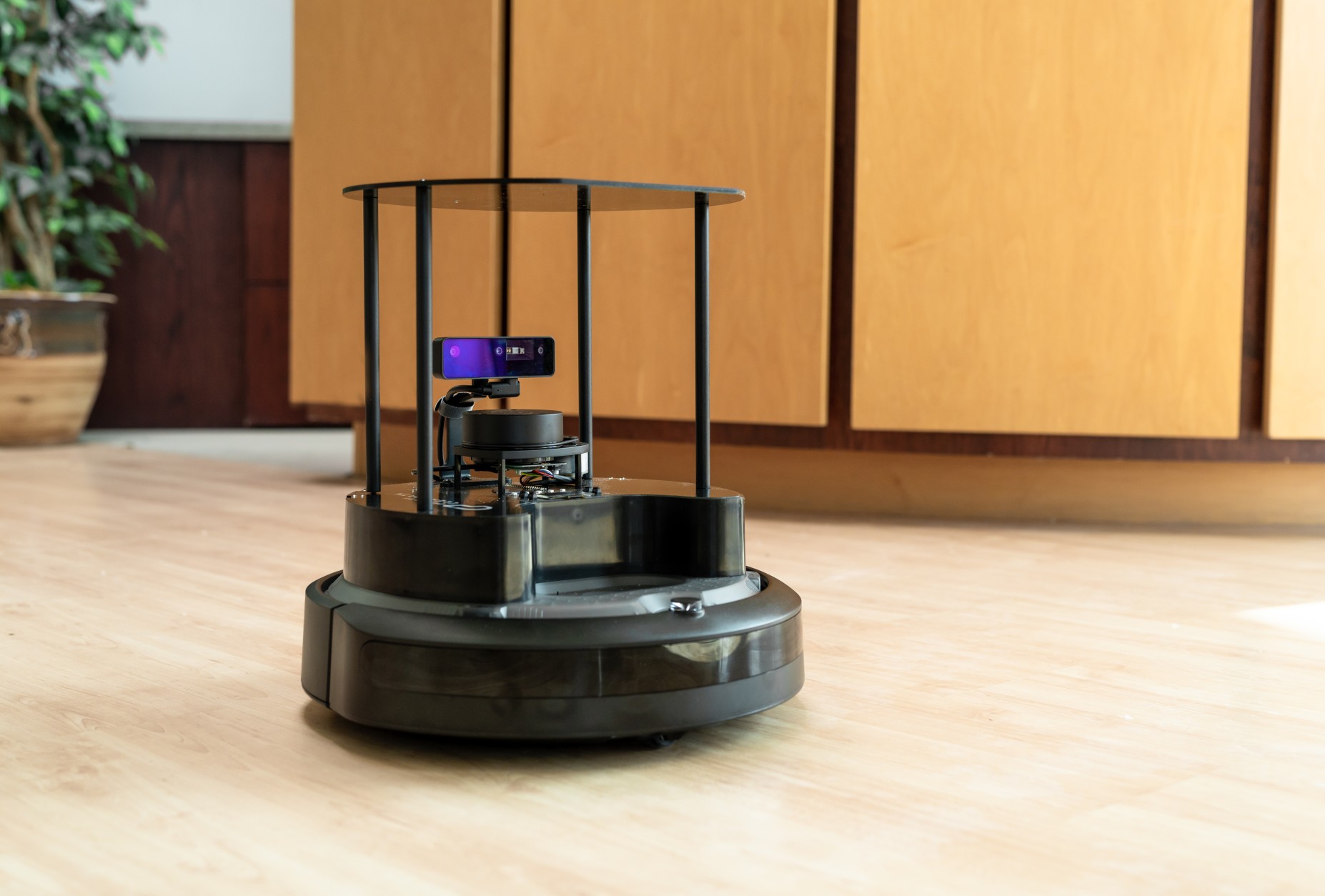TurtleBot 4: The Next Generation in Accessible Robotics

The "TurtleBot" might have the name of one of nature's slowest creatures — but make no mistake, this powerful piece of equipment represents a rapid leap forward for robotics development. With the new TurtleBot 4 Mobile Robot coming soon this fall, the next-generation robotic platform for learning the Robot Operating System (ROS), it's more relevant than ever to take a look back at how the TurtleBot came to life.
Here, we'll take you through the history of the TurtleBot, from how ROS and ROS2 helped to spur the growth of the system up to its remarkably promising future.
Turtlebot: The Origins
To talk about TurtleBot, we first need to go back to the software that started everything: ROS, or the "Robot Operating System." We've talked about the ROS before. This tremendous development was the first real piece of software that delivered a framework for both operating and programming robots. It came out of Stanford University's Personal Robotics Program and the minds of creators Eric Berger and Keenan Ryrobek; the two went from Stanford to the advanced robotics lab and technology incubator company called Willow Garage in Silicon Valley.
Willow Garage's efforts birthed the fabled PR2 robot. The PR2 was a massive success, blessed with tremendous abilities for its time at its 2010 introduction. It was a giant leap forward in robotics technology that also came with a similarly gigantic price tag. That monstrous price tag left the PR2 well out of reach for the budgets of roboticists and educational and research institutions.
As a result, Willow Garage went to work on a new generation of robots. This next-generation product needed to be natively compatible with the ROS operating system and also had to be easily programmable with a low price tag for the everyday roboticist or cash-strapped college to afford. It wouldn't be an easy process. This new autonomous mobile robot needed three abilities:
- To perceive its surroundings (SENSE).
- To execute necessary algorithms (THINK).
- To move in its surrounding environment (ACT).
Introducing the TurtleBot
With those guidelines in mind, the brilliant engineers at Willow Garage went to work. The result? The very first TurtleBot crawled out of Willow Garage in November 2010 (created by Melonee Wise and Tully Foote). This first-ever TurtleBot consisted of:
- An iRobot Create 1 mobile base. This was an extremely functional Roomba robot; users could communicate with the robot via a serial port.
- A Kinect sensor, cutting-edge technology for the time. As shown with the Xbox console and in personal computers in 2010, the Kinect sensor provided exceptional control along with 3D perception capabilities for its sensor.
- An inexpensive and compact Netbook for control and oversight, significantly cutting down on the cost issues plaguing most other robots.
Designed as an "entry-level" mobile robotics platform, TurtleBot used SLAM and navigation for its core technology. SLAM (Simultaneous Localization and Mapping) software enabled home users to easily control the robot from devices like an Android phone. The "navigation" aspect of the technology allowed the use of a robotics arm.
With an accessible price point, off-the-shelf assembly options, a thriving online community, and easily accessible documentation online, TurtleBot was an instant hit. For many roboticists and aspiring students of robotics, the TurtleBot quickly became their entryway into the larger robotics world. It was (relatively) cheap, easily programmed, and easily customized with additional sensors or accessories.
TurtleBot Grows Up
After the success of the original TurtleBot, Willow Garage (and Clearpath Robotics) kept it up with subsequent editions of their favorite 'bot. TurtleBot2, released in October 2012, added a Yujin Kobuki base and a powerful Asus 1215N laptop to the platform. Four years later, TurtleBot 3 arrived with a customizable shape for users. TurtleBot 3 also featured three different sizes: small (named Burger), medium-sized (Waffle), and the highest-end (Waffle Pi). This advanced version of TurtleBot included two Dynamixel motors, a 360-degree LIDAR, a RealSensea camera, and a "Single Board Computer" with Intel Joule 570x.
In May 2022, the newest TurtleBot hit the market for pre-order. The TurtleBot 4 (with ROS 2 compatibility) builds on the best components from prior versions, delivering a modern, robust, and easy-to-use base appropriate for beginners to seasoned roboticists.


The new TurtleBot includes:
- An iRobot Create 3 mobile base
- Raspberry Pi 4 running ROS 2
- An OAK-D spatial AI stereo camera
- 2D LiDAR
- An optical floor tracking sensor, infrared, and slip detection
- A 9kg payload capacity
- A standard ROS 2 interface
Getting Your Own TurtleBot
Interested in acquiring your very own TurtleBot? RobotShop proudly offers two different options for shipping later this fall:

- The TurtleBot 4 mobile robot offers an Oak-D pro camera, accessible power and USB ports, and an OLED display for a powerful open-source robotics platform for learning and development.

- The TurtleBot 4 "lite" mobile robot is a powerful and cost-effective option for open-source learning and development built on the iRobot 3 educational robot.
The TurtleBot is ideal for learning and development purposes and is a great tool for researchers, professionals, students, scientists, and more. TurtleBot 4 comes with comprehensive courseware material, including lesson plans, lecture content, tutorials, and sample tests; educators can easily incorporate TurtleBot into robotics training courses.
Contact the RobotShop team directly for more information!
Thanks for helping to keep our community civil!
This post is an advertisement, or vandalism. It is not useful or relevant to the current topic.
You flagged this as spam. Undo flag.Flag Post


